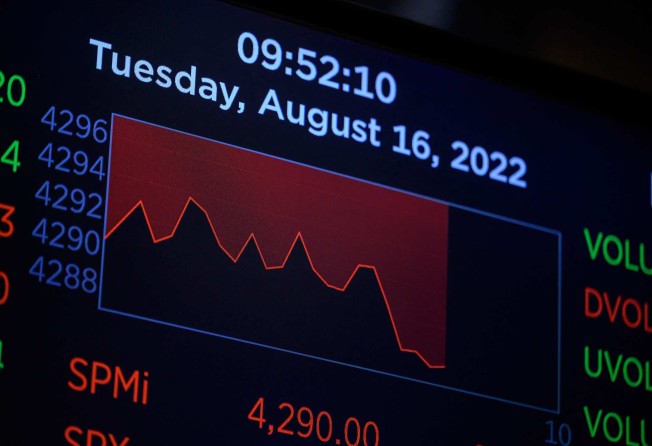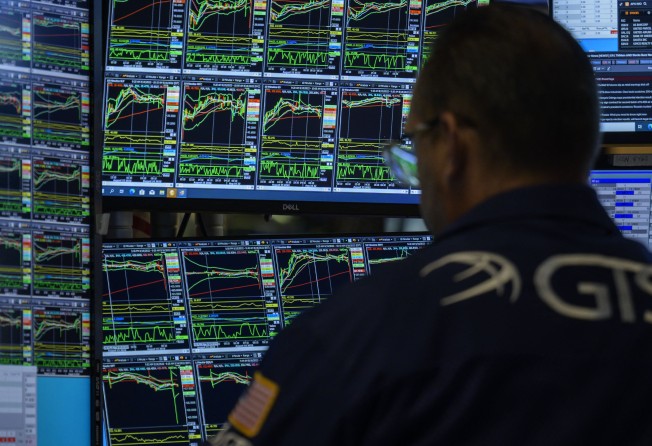
US bear market rally is in full swing, but how long will it last?
- US stocks have made back much of their losses from the first half of the year, and there are signs that the rally in equity markets still has a way to go
- An examination of factors such as policy, positioning, price and profits might help answer whether we are heading for a bull market, or if the lows will be tested again

The second half of the year has started very differently from the first. Bond yields are behaving themselves and equity markets are rising. Since the low on June 16, the S&P 500 has risen more than 15 per cent and unwound close to half of the peak-to-trough drop during the first half of 2022. The bear market rally is in full swing.
Equity rallies during periods of overarching market weakness are not uncommon, and there can be multiple rallies even during a more prolonged downturn. Analysis by J.P. Morgan of the past five major US equities’ bear markets showed that the market rallied by more than 10 per cent on average five times during those bear markets.
So will this rally become a bull market, or will the lows be tested again? Using a framework of four Ps – policy, positioning, price and profits – might help in answering that question.
On policy, the aggressive change in tone on inflation and getting interest rates quickly back to a neutral level were the most significant factors behind the weak performance across stock and bond markets in the first half of the year.
The pain was most acute in equity markets, where things looked most overvalued. These high valuations became tenuous as risk-free rates rose and expected future earnings were discounted at higher rates, making them worth less in today’s money.
Central banks are still focused on bringing down inflation, but it appears to have peaked, at least in the United States. The combination of weaker demand and falling commodity prices is helping to slow price rises.
For the US, consumer prices were unchanged in July from a month earlier. This is better news for the US Federal Reserve and suggests the pace and size of interest rate increases can be gradually reduced in the coming months as inflation starts to fall.
On positioning, risk sentiment weakened in the first half of the year and investors pulled money from global equity markets. The Bank of America fund manager survey for July reported that a net 44 per cent of asset managers were underweight on equities in their portfolios. The last time the percentage was so high was in October 2008, in the depths of the global financial crisis.
When asset allocators have more cash than usual to put to work in the market, it can sometimes be seen as a contrarian indicator and a positive sign of things to come. To paraphrase Warren Buffett, the best time to be greedy is when others are the most fearful.
As for price, equity markets are forward-looking and often reflect expectations for what is to come rather than what is happening today. At the start of the year, when valuations were well above long-term averages, the common theme was that equities were too expensive. Now it is whether they have become cheap enough.

Valuations could fall further if there is another shock to the global economy or central banks signal that interest rates will be much higher than current market expectations. However, the decline so far this year has already captured much of the market risk.
The final piece of the puzzle is profit and whether companies can continue to remain profitable in a slowing economy as revenue growth is tempered and margins pressured from rising input costs.
The US second quarter earnings season has just wrapped up, and the news was not good. Corporate earnings fell by 9.5 per cent compared to a year ago and 4.6 per cent between the first and second quarter.
More important for the market was that, with expectations so low heading into the earnings season, it was not a particularly high hurdle for corporate America to overcome. Around 70 per cent of companies were ahead of analysts’ expectations for revenue and 63 per cent beat revenue estimates.
Outperforming estimates means companies have been able to pass on higher costs to customers, protecting margins and profitability. This might not always be the case if household budgets continue to be squeezed and spending falls.
The rally in equity markets since June will be welcomed by many after the horrendous performance in the first half of the year. Having said that, it is not clear whether they have found the bottom or if they will retest their lows at some point.
While the market is likely to remain cautious, given the uncertain economic outlook, a framework that considers policy, position, prices and profits should provide some context to how far the rally can go.
Kerry Craig is a global market strategist at J.P. Morgan Asset Management